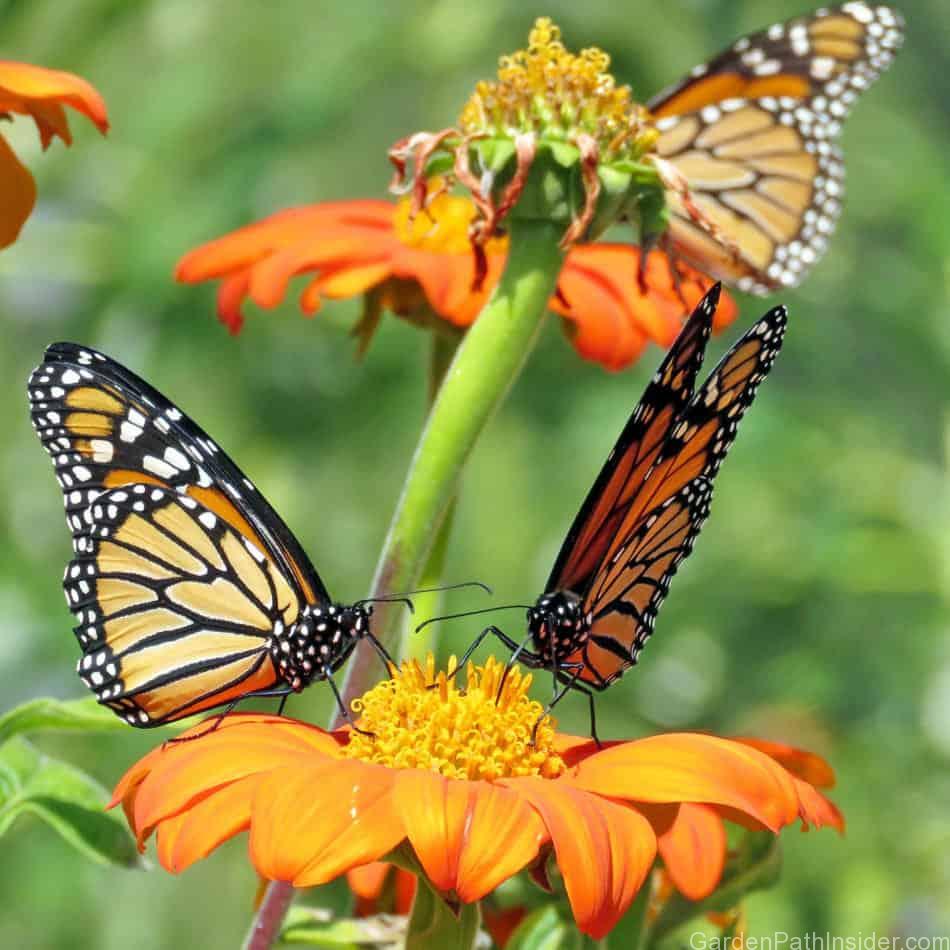
Monarch butterflies are an important part of the ecosystem, helping to pollinate flowers in bloom. Their beauty and presence in a garden are a special experience for any gardener.
Monarch butterflies conduct a round trip migration each year, while many other species of butterflies overwinter in cold climates. During the migration, monarch adults will feed on nectar plants while laying their eggs on Milkweed plants. Milkweed is the only food source for monarch caterpillars, while adults enjoy nectar from many different plants.
It takes four generations of monarch butterflies to complete the 3,000-mile round-trip migration each year. Planting your own Monarch butterfly garden will provide the Monarch species with food and host plants during their round-trip migration each year. The list of plants below will help you identify and plan your very own monarch butterfly garden.
Cover image details: Three Monarch butterflies and red daisies in the garden on the bank of the Lake Ontario in Toronto, Canada_© Emanuel Kaplinsky/123rf.com
Overview of Monarch Butterflies
Monarch butterflies are special because they migrate over 3,000 miles each year during the winter months, while many other species of butterflies can overwinter in differing stages of life, According to the U.S. Forest Service
During the warmer months, monarchs live in North America, mainly in Southern Canada and nearly all of the United States.
Each year the butterflies instinctively know it’s time to begin the migration south to warmer weather. Making a journey the individuals have never made before, they begin to migrate.
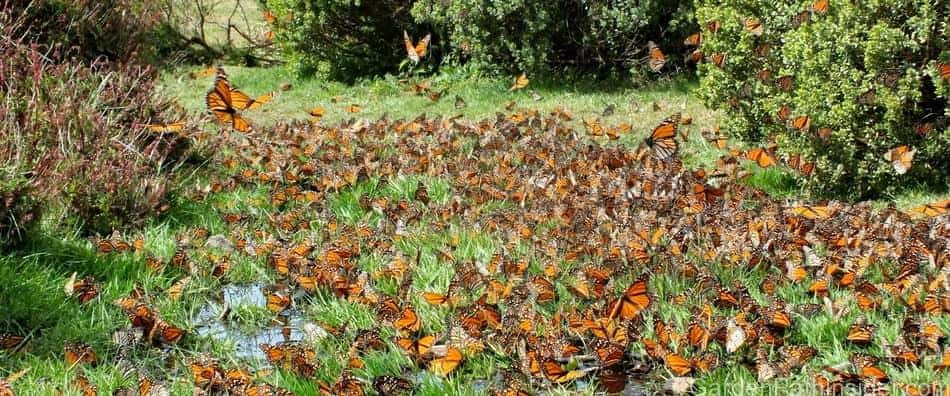
The full migration will take four generations of monarch butterflies to complete. The butterflies in my backyard this season are the Great-grandchildren of the butterflies in my backyard last season.
Due to the seemingly endless migrations, the butterflies make in their brief 4-to-6-week life span, gardeners lovingly refer to their monarch gardens as monarch way stations. As the garden is more of a brief way station stopover for the monarchs to eat rest and lay the eggs of the next generation.
Enjoy the plant collection below and have fun creating your own little oasis for these beautiful and fascinating butterflies.

| Asclepias Asperula | |
| Name: | Antelope horns milkweed |
| Binomial Name: | Asclepias Asperula |
| Life Cycle: | Perennial |
| Sun Needs: | Full sun |
| Soil Needs: | Well-draining nutrient-rich soil also tolerates sandy / rocky soil |
| Water Needs: | Maintain moist soil / also tolerates drier soils |
| Bloom Time: | Blooms mid Spring through Fall |
| USDA Hardiness: | 7-9 |
| Size: | Can grow taller than 36 inches (91cm) |
| Butterfly Benefit: | Monarch larva food source |
| Facts: | Native the United States and Mexico |
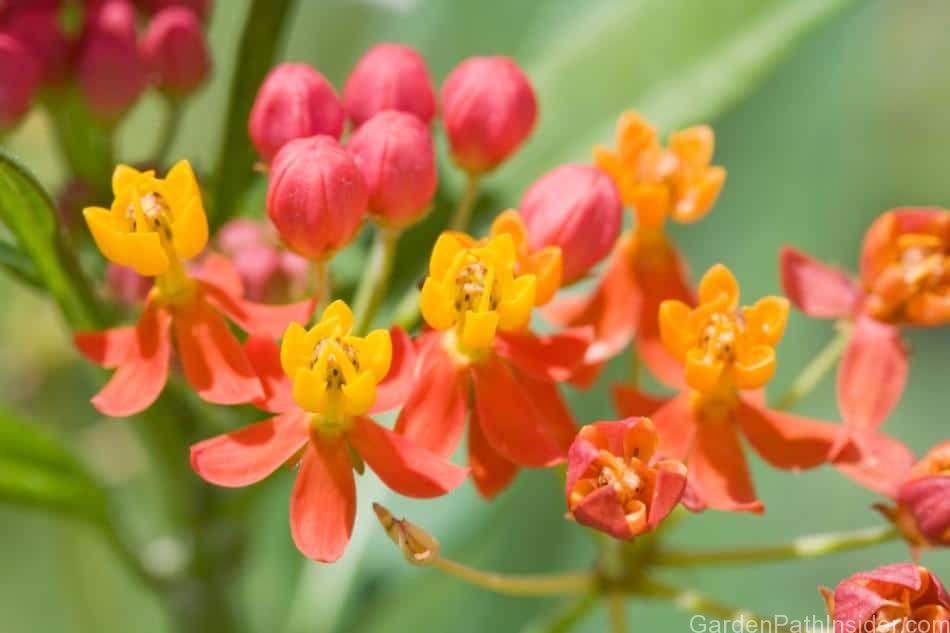
| Asclepias Curassavica | |
| Name: | Tropical milkweed |
| Binomial Name: | Asclepias curassavica |
| Life Cycle: | Perennial shrub |
| Sun Needs: | Full sun |
| Soil Needs: | Well-draining nutrient-rich soil also tolerates sandy / rocky soil |
| Water Needs: | Maintain moist soil / also tolerates drier soils |
| Bloom Time: | Blooms Summer through Fall |
| USDA Hardiness: | 9-11 |
| Size: | Can grow to 36 inches tall (91 cm) |
| Butterfly Benefit: | Monarch larva food source |
| Facts: | Also attracts hummingbirds |
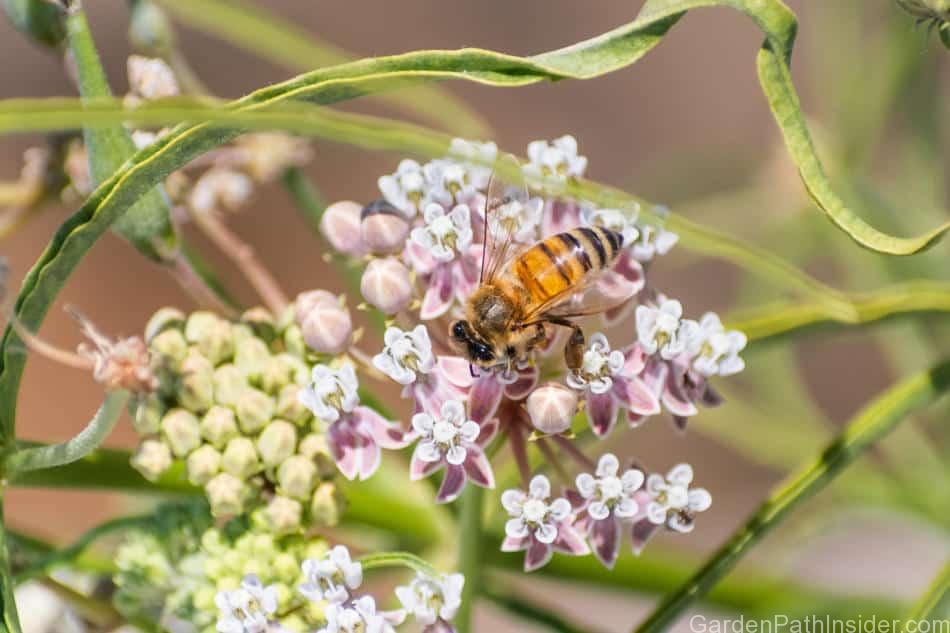
| Asclepias Fascicularis | |
| Name: | Mexican whorled milkweed |
| Binomial Name: | Asclepias fascicularis |
| Life Cycle: | Perennial |
| Sun Needs: | Full sun |
| Soil Needs: | Well-draining nutrient-rich soil also tolerates sandy / rocky soil |
| Water Needs: | Maintain moist soil / also tolerates drier soils |
| Bloom Time: | Blooms Summer through Fall |
| USDA Hardiness: | 6-10 |
| Size: | Can grow taller than 36 inches tall (91 cm) |
| Butterfly Benefit: | Monarch adult food source, and habitat plant/food source for caterpillars |
| Facts: | Common in the western United States |
| Use caution: Milkweed may not be allowed in every state or country, as the plant can be toxic if eaten in large amounts. This could impact pets and wildlife. |
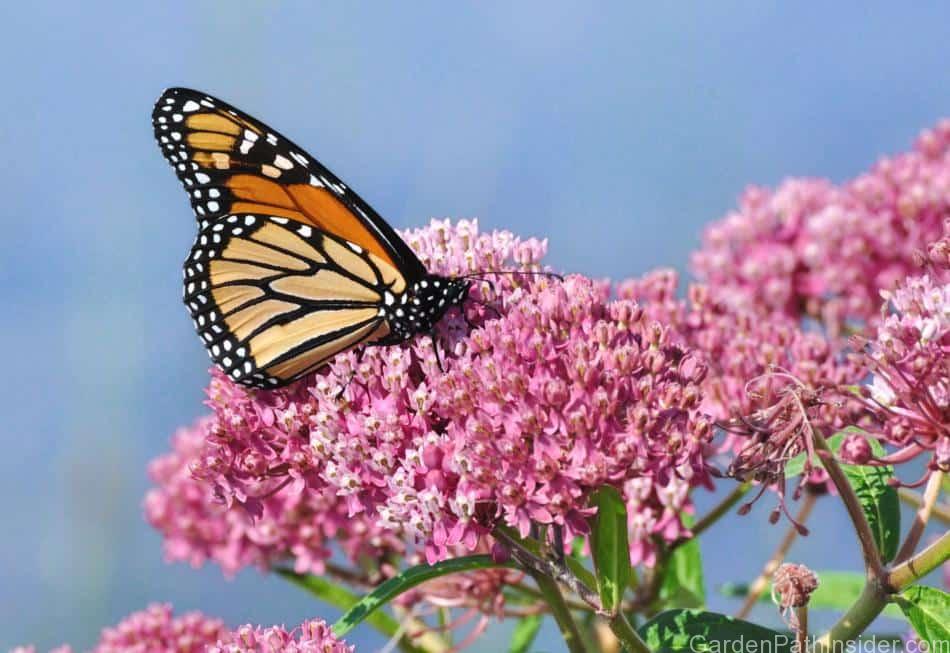
| Asclepias Incarnata | |
| Name: | Swamp milkweed |
| Binomial Name: | Asclepias incarnata |
| Life Cycle: | Perennial |
| Sun Needs: | Full sun, partial sun |
| Soil Needs: | Well-draining nutrient-rich soil |
| Water Needs: | Maintain moist soil |
| Bloom Time: | Blooms Summer through Fall |
| USDA Hardiness: | 3-8 |
| Size: | Can grow taller than 59 inches (150cm) |
| Butterfly Benefit: | Monarch adult and caterpillar food source, and host plant for eggs |
| Facts: | One of the best attractants for Monarch butterflies |
| Use caution: Milkweed may not be allowed in every state or country, as the plant can be toxic if eaten in large amounts. This could impact pets and wildlife. |
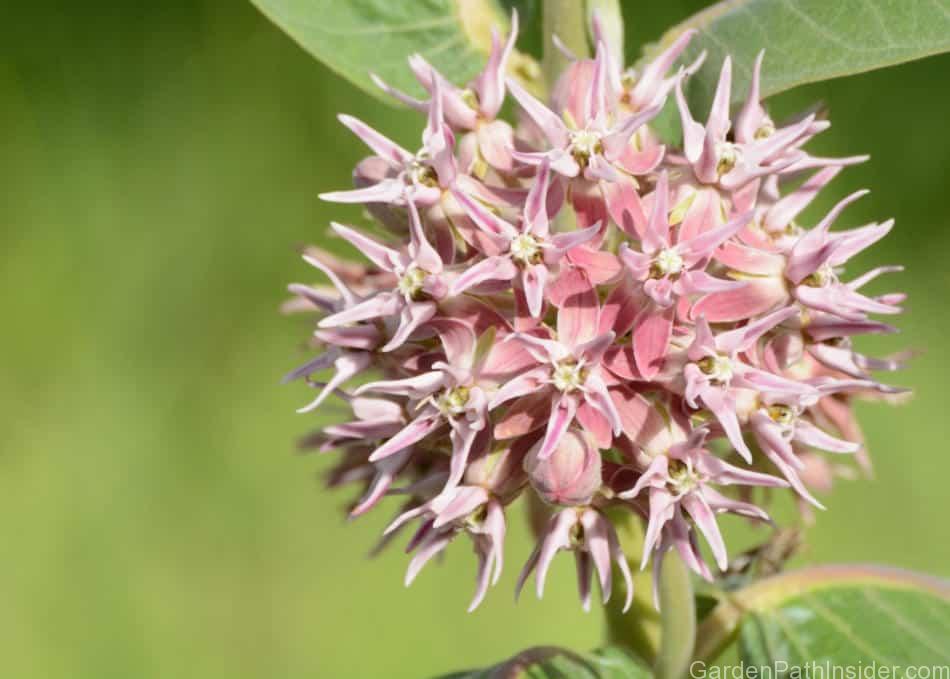
| Asclepias Speciosa | |
| Name: | Showy milkweed |
| Binomial Name: | Asclepias speciosa |
| Life Cycle: | Perennial |
| Sun Needs: | Full sun, partial sun |
| Soil Needs: | Well-draining nutrient-rich soil also tolerates sandy / rocky soil |
| Water Needs: | Maintain moist soil / also tolerates drier soils |
| Bloom Time: | Blooms late Spring through Fall |
| USDA Hardiness: | 3-9 |
| Size: | Can grow taller than 36 inches tall (91 cm) |
| Butterfly Benefit: | Monarch adult and caterpillar food source, and host plant for eggs |
| Facts: | Native to the Western United States |
Click Below To Continue The Journey On The Next Page!
Please note: While we have worked to provide the most accurate information, climate and growing location will impact the size, height, bloom-time, annual/perennial status, and may impact color. We have gathered this data from personal experience, with online resources used for additional clarification. Additional references include google and usda.gov

